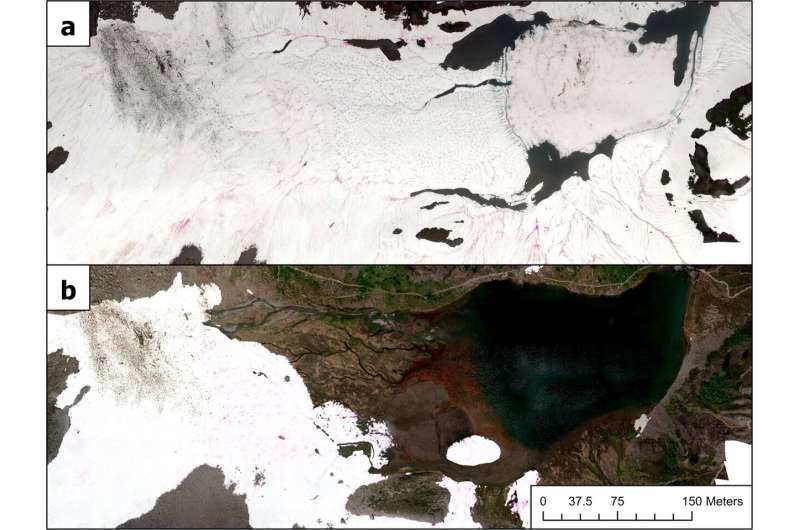Algae blooms increase snowmelt in the Pacific Northwest by 20%

Algae that commonly grow on snow in the Pacific Northwest have been ignored in melt models, but their presence significantly increases snowmelt compared with clean, white snow, according to a study conducted on Mount Baker in the North Cascades, Washington.
Scientist Alia Khan at Western Washington University and the National Snow and Ice Data Center at the University of Colorado Boulder, is the senior author of the study. Clean snow reflects as much as 99% of incoming solar radiation, helping to protect Earth’s atmosphere from warming.
Algae, usually a red color, often bloom on snow in the summer months in the Pacific Northwest. They cause the albedo, or reflectivity, of the snow to decrease by about 20%. That energy is absorbed rather than reflected to space because of the algae’s darker color. Results of the study were published in Communications Earth & Environment.
“Snow algae are very common in high alpine snowpacks, especially in the Pacific Northwest, yet they have not been considered drivers of snowmelt and are not included in regional watershed melt models,” said Khan. “At the height of the summer, the algae become dark red, resembling blood on snow. As climate change continues to warm the region, we expect snow algae bloom intensity to increase, which will likely have repercussions on the timing and magnitude of seasonal snowmelt in the North Cascades.”
The North Cascades spring snowpack declined by about 38% between 1938 and 2016 because of increasing atmospheric temperatures, and it is projected to decrease an additional 38% to 46% by 2050, relative to the 1970 to 1999 average.
However, these projections have been calculated without taking into consideration the impacts of snow algae, which could further advance spring snowmelt. Glacier area in the North Cascades has also decreased by 56% over the last century. As snow cover decreases, glacier ice, which is inherently darker than snow, is exposed to solar radiation for longer periods of time, exacerbating glacier ice melt.
“These algae that grow in snow may play an important role in the melting of mountain snowpack,” said Rebecca Gast, a program director in NSF’s Office of Polar Programs.
More information:
Shannon M. Healy et al, Albedo change from snow algae blooms can contribute substantially to snow melt in the North Cascades, USA, Communications Earth & Environment (2023). DOI: 10.1038/s43247-023-00768-8
Citation:
Algae blooms increase snowmelt in the Pacific Northwest by 20% (2023, June 15)
retrieved 15 June 2023
from https://phys.org/news/2023-06-algae-blooms-snowmelt-pacific-northwest.html
This document is subject to copyright. Apart from any fair dealing for the purpose of private study or research, no
part may be reproduced without the written permission. The content is provided for information purposes only.
For all the latest Science News Click Here
For the latest news and updates, follow us on Google News.

